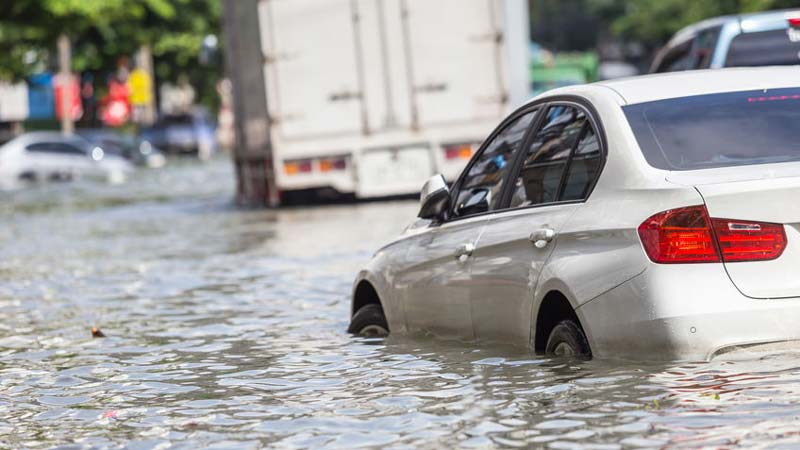Electric cars have gained significant popularity in recent years due to their eco-friendliness and energy efficiency. As more people make the transition to electric vehicles, it’s important to understand how various external factors can affect these cars. One such factor is flooding. In this article, we will explore the consequences of flooding on electric cars and what to do if you find yourself in this unfortunate situation.
What Happens If An Electric Car Gets Flooded
Electric cars are innovative machines that rely on advanced electrical systems to function. When they come into contact with floodwaters, the consequences can be severe. Let’s dive deeper into what happens if an electric car gets flooded.
Electrical System Damage
The most significant impact of flooding on electric cars is the damage to the electrical system. Electric vehicles have a complex network of wires, batteries, and electronic components that are highly susceptible to water damage. When water infiltrates these components, it can short-circuit the system, leading to a wide range of issues, including:
- Loss of Power: Flooded electric cars may experience a sudden loss of power, making it impossible to drive or even start the vehicle.
- Malfunctioning Electronics: Various electronic systems, such as the touchscreen dashboard, infotainment, and safety features, may become non-functional.
- Battery Damage: The vehicle’s lithium-ion battery, a critical component, is vulnerable to water damage. Once compromised, it can lead to costly repairs or even complete battery replacement.
- Motor Damage: The electric motor itself can suffer from water exposure, causing long-term damage and potentially rendering the vehicle inoperable.
Safety Hazards
Flooded electric cars also pose safety hazards to both the vehicle’s occupants and those trying to rescue or repair the car. Here are some safety concerns to be aware of:
- Electrocution Risk: Water and electricity don’t mix. In a flooded electric car, there’s a significant risk of electrocution for anyone who comes into contact with the vehicle.
- Chemical Leakage: Electric vehicles contain various chemicals and coolants that, if exposed to floodwaters, can leak and pose environmental risks.
- Hidden Damage: Sometimes, the extent of damage caused by flooding is not immediately apparent. This hidden damage can result in unexpected issues down the road.
Immediate Actions When Your Electric Car Gets Flooded
If your electric car has been exposed to flooding, it’s essential to take immediate action to mitigate further damage and ensure safety:
- Do Not Attempt to Start the Vehicle: Trying to start a flooded electric car can worsen the damage. Contact a tow truck or emergency services to move the car safely.
- Turn Off the Power: Disconnect the car’s power source by removing the battery or contacting a professional mechanic.
- Contact Your Insurance Provider: Inform your insurance company about the situation and follow their guidelines for filing a claim.
- Seek Professional Assistance: Electric cars are complex machines, and attempting DIY repairs can be dangerous and void warranties. It’s best to seek professional assistance to assess and repair the damage.
Preventing Flooding Damage
Prevention is always better than dealing with the aftermath. To safeguard your electric car from flooding, consider these precautions:
- Park in Safe Locations: When parking your electric car, choose higher ground or safe, flood-free areas.
- Stay Informed: Keep an eye on weather reports and avoid driving during heavy rains or flood warnings.
- Waterproofing: Some electric vehicle owners opt for waterproofing kits that can help protect sensitive electrical components.
- Comprehensive Insurance: Ensure your car insurance covers flood damage to provide financial security in case of an unfortunate event.
Conclusion
Understanding what happens if an electric car gets flooded is crucial for electric vehicle owners. Flood damage can have severe consequences, not only in terms of the vehicle’s functionality but also for safety. Taking preventative measures and knowing how to respond in case of flooding can help protect your investment and ensure your safety.
